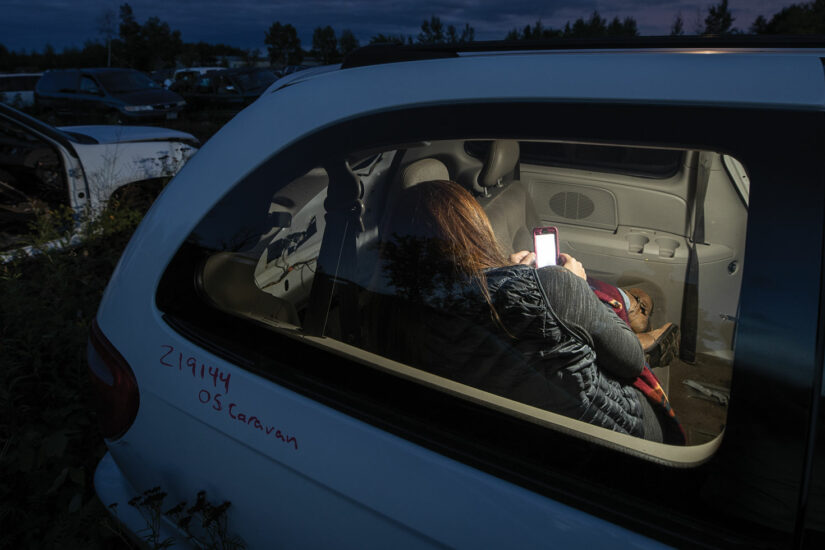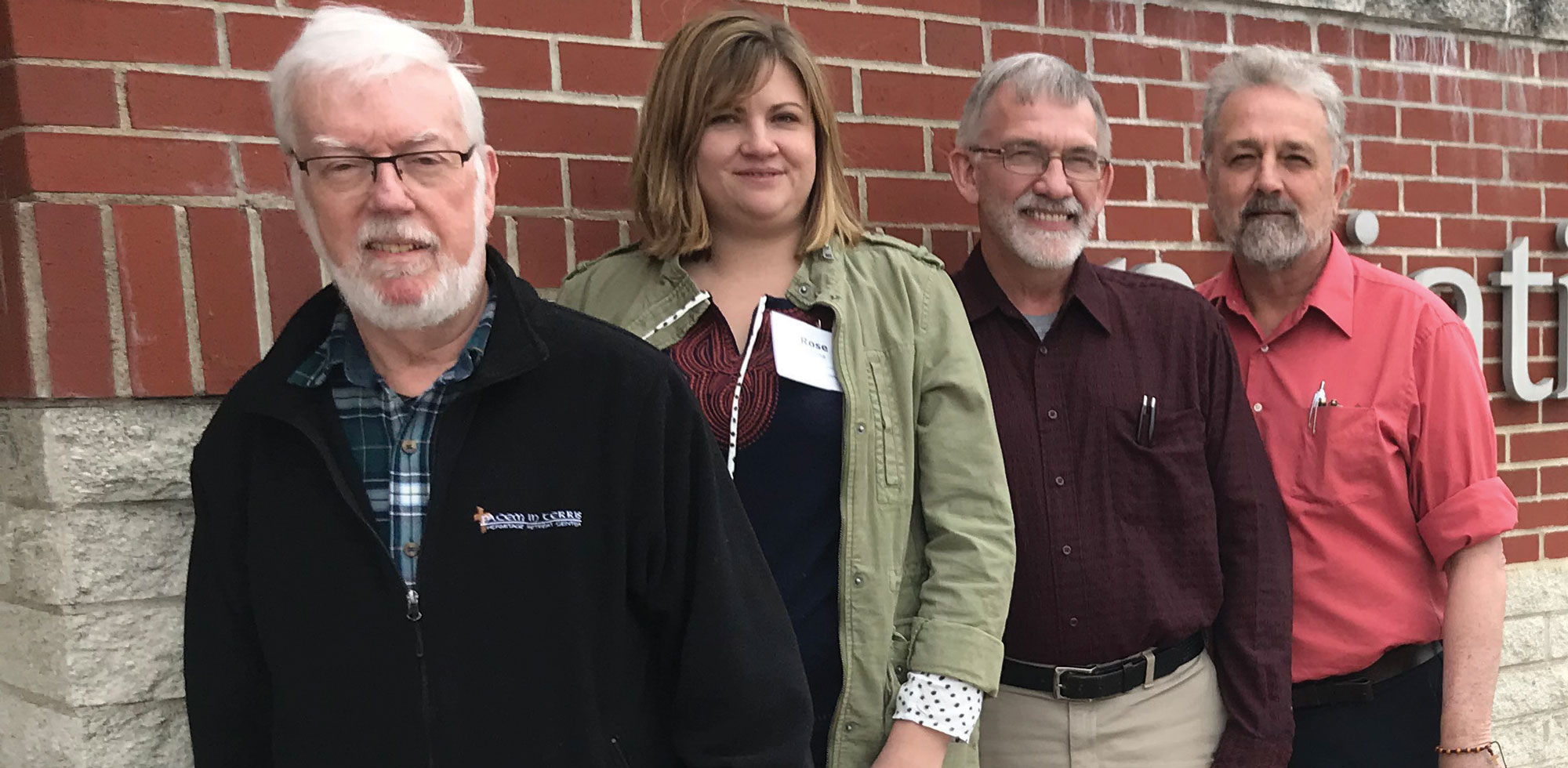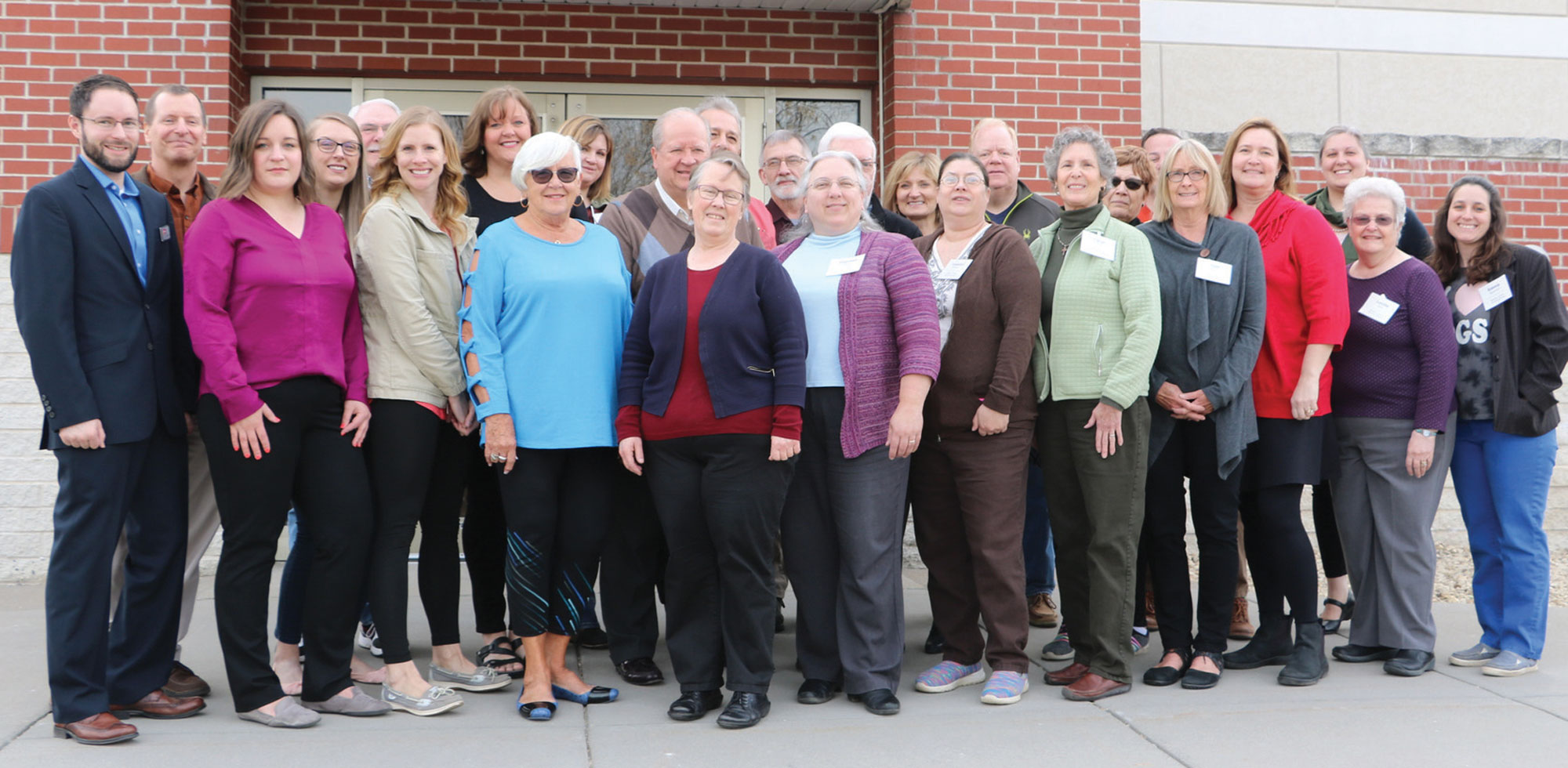
Mission Possible
The Initiative Foundation’s Financial Resiliency program helps regional nonprofits find their path to long-term sustainability.
By John Reinan | Photography By John Linn
In January 2015, a woman approached Rose Surma, who was new in her job as executive director of Little Falls-based Oasis Central Minnesota. At the time, the organization provided resources and referrals for people who were experiencing food scarcity. “She told me that she was homeless and didn’t have family, friends or support within the community,” said Surma, who learned the woman, even on frigid winter nights, was sleeping in a junkyard car.
After calling every government organization and nonprofit she could think of, Surma was dismayed to discover there were no local solutions to alleviate homelessness. So she decided it was time for Oasis to expand the nonprofit’s mission to include emergency housing for those who need it.
The trick was figuring out how to make it happen. Oasis would, Surma realized, need a new set of tools to improve the nonprofit’s financial health as it expanded to meet this pressing need.

Nonprofits are at the heart of any community. Whether they are providing food for the hungry, job training for teenagers, or advocating for cleaner lakes and rivers, our region’s not-for-profit organizations touch the lives of every person who calls Central Minnesota home. And like any organization, community nonprofits come with their own set of challenges. With small staffs and modest budgets, the typical nonprofit is stretched between carrying out its day-to-day mission and doing the essential fundraising work to ensure it will be around in the future.
Providing the support nonprofits need to survive and thrive has been an Initiative Foundation priority. Last year, the Foundation’s Financial Resiliency program gave a dozen Central Minnesota nonprofits, including Oasis, new tools to build their future. The most recent round of the program launched in September.
“The program takes a business-minded approach to nonprofit development,” said Zach Tabatt, a nonprofit organizational development specialist with the Initiative Foundation. “What we’re doing is walking participants through a deep dive into what they see as their model and their enterprise—to improve their marketing and financials, and to come out with a new way of looking at how they operate. The intent is that they are able to find new sources of income or creative ways to bring in new donations.”
In this way, the program serves as a boot camp for nonprofit leaders and board members. In a yearlong, 13-session program, nonprofits get intensive training in finance, marketing and other areas critical to their ongoing health. Participants say it’s been a game-changer.
“All I can say is, ‘Thank you very much,’” said Rick Hest, board president of Hilltop Regional Kitchen in Eagle Bend, which prepares nearly 70,000 packaged meals a year for statewide distribution. The program enabled Hest and other Hilltop board members to examine areas of their operation, including board governance, branding and articulating the nonprofit’s mission.
“This is going to make a big difference,” Hest said. “It’s taken us from somewhere in the middle of last century to somewhere closer to where we should have been all along.”
ONE ASK
Using a mix of volunteer and paid experts, the Initiative Foundation convenes an annual cohort of eight to 12 nonprofits for monthly sessions. Each five-hour gathering is focused on a particular business discipline. Experts guide participants through lectures and exercises geared toward building knowledge that will help them discover their own solutions. The sessions also include one-on-one time with the experts, who are also available for consultation after the program ends.
“These people all had such depth of knowledge,” said Hest, who particularly appreciated the insights of mentor and retired Initiative Foundation grants specialist Barb Downs, who helped with both big-picture thinking and more practical matters, including how to set up an equipment repair fund. “It’s all about, ‘We’re not going to tell you what to do, but we’re going to probe and think through what your future might look like,’” he said.
In addition to learning from expert presenters, participants gain knowledge from one another, said Steve Berg, a board member with the Lakes Area Restorative Justice Project (LARJP) in Brainerd, which works with juvenile offenders and their victims to bring healing and reduce the chances of repeat offenses. LARJP was recently named Brainerd Area’s Nonprofit of the Year by the Community Action Council of Crow Wing County. Program participants make connections with other
nonprofit leaders that bring lasting benefits as the network of graduates grows.
For Berg, the biggest takeaway was developing a sharper sense of his group’s mission, which is bringing crime victims and offenders together to make things right for the victim while also keeping the offender out of the court system.
“We’ve got a pinpoint message now of what we do, what we mean to a community and how your donation helps us,” he said. “No matter if it’s our executive director or a board member, it’s one message, one purpose, one ask.”
That level of clarity is crucial at a time when nonprofits are increasingly being asked to raise more money on their own. “You’ve got to use all the tools you have, because a lot of grants now have strings attached,” Berg said. “There’s more onus today on the nonprofit to make sure they’ve got their ducks in a row if they want that money.”
LARJP is now enrolled in a second track of the Financial Resiliency program, Jumpstart, which provides nonprofits access to donor management software and instruction in how to use it.

ON BOARD
Graduates said the involvement of their nonprofit board members is essential to unlocking organizational potential.
“It really engaged them in the work of building our organization, not just going to board meetings,” said Surma. “It allows them to be empowered and informed about finances and balance sheets, so everybody can have input on that, and it’s not just something people vote on at a meeting. It’s being able to work as a team, and not just one person taking on everything.”
As a result of their work in the Financial Resiliency program, LARJP has revamped its board. “The expectations of a board member are significantly different than they were five years ago,” Berg said. “You’re not just going to a meeting. You have to be actively involved. You have to understand the message. You have to go out in the community. And you have to make a financial commitment, as well.”
The Financial Resiliency program is free to participants—a tremendous benefit when you consider that similar courses offered through universities or private contractors typically cost thousands of dollars per person. The Initiative Foundation invests the equivalent of $10,000 for each nonprofit that goes through the program.
For Hilltop Regional Kitchen, which moved into a larger kitchen in 2018 and already is dishing up about 40 percent more meals than it did in its old location, the Financial Resiliency experience has helped the group stay focused as its mission expands. In her work as the organization’s mentor, Downs brought home the need to ensure that every idea aligns to the nonprofit’s mission.
“We’ve had a few ideas come up, and when we looked at it, we said, nope—that’s not in our mission,” said Hest.
For Surma and Oasis, the program became the bridge to a successful grant application that is paving the way for the Oasis homeless shelter. “The Financial Resiliency program let us tell our story in a way that gave us legitimacy,” said Surma. “And it got us all rolling in the same direction.”
When Oasis found out the building they were hoping to get for the shelter was available, one of Surma’s first phone calls was to a consultant in the Financial Resiliency program. After working together to determine if it was a good opportunity, Oasis partnered with St. Gabriel’s Hospital in Little Falls to secure $100,000 in legislative funding and a $75,000 grant from Sourcewell, which they hope will allow the nonprofit to open its shelter doors sometime this winter.
A new Financial Resiliency cohort is now under way. Some graduates of the previous cohort are continuing with further courses to supplement their training.
“We’re helping to improve the financial stability of these organizations,” said Tabatt. “The community benefits by having more stable and successful nonprofits, regardless of what their individual missions might be, and clients of these nonprofits can be assured that the programs they rely upon stand a good chance of being around well into the future.”